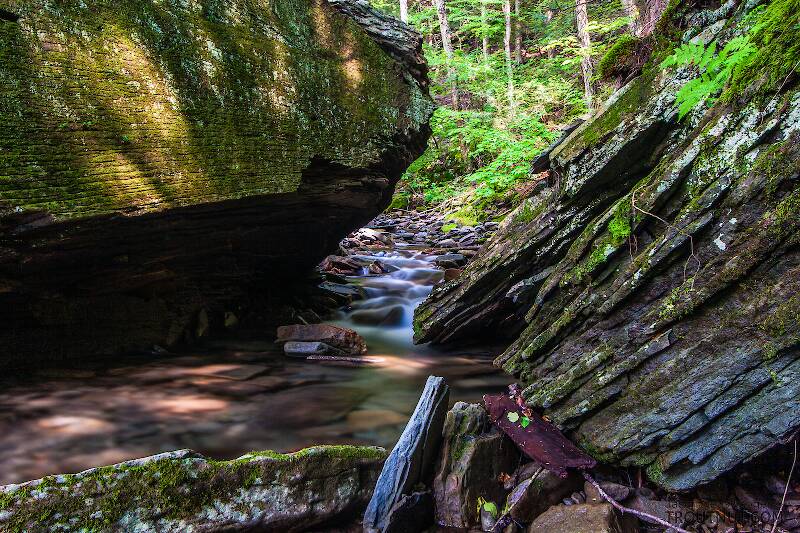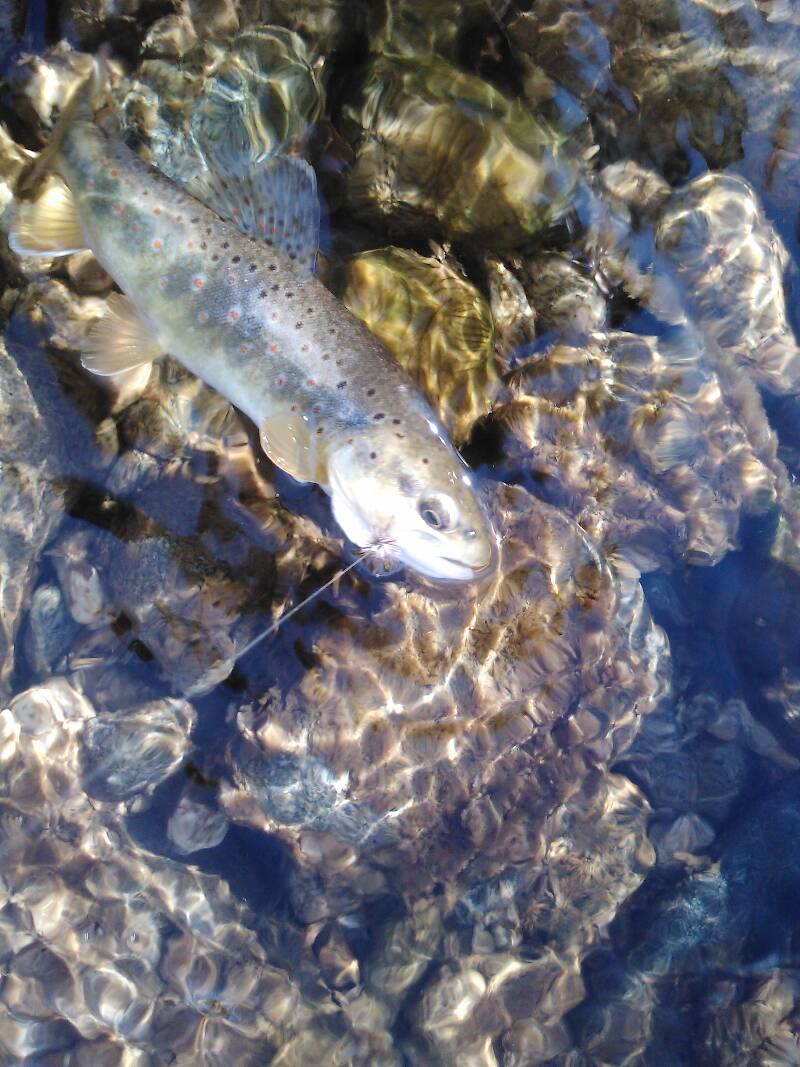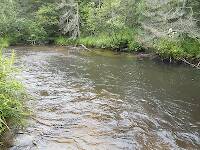
Blue-winged Olives
Baetis
Tiny Baetis mayflies are perhaps the most commonly encountered and imitated by anglers on all American trout streams due to their great abundance, widespread distribution, and trout-friendly emergence habits.
Featured on the forum

Troutnut is a project started in 2003 by salmonid ecologist Jason "Troutnut" Neuswanger to help anglers and
fly tyers unabashedly embrace the entomological side of the sport. Learn more about Troutnut or
support the project for an enhanced experience here.
Partsman on Feb 2, 2019February 2nd, 2019, 8:20 am EST
OK I am officially over winter, and with that proclamation Im wondering what are some of the really early dry fly patterns or some effective early season nymph patterns, Im sitting at the vise right now, and I have been tying some brown. drakes and Roberts yellow drakes, and some bwos. The bwos are size 18,20, and 22. Any good Hendrickson patterns I should be aware off? Of course this will be for Michigan trout streams, but I think the best patterns are universal in were they work. Anyways, I hope that big rodent is right and spring is just around the corner!
Mike.
Mike.
Wbranch on Feb 2, 2019February 2nd, 2019, 9:16 am EST
Mike,
In my neck of the woods the earliest dry flies are Early Black and Early Brown Stone fly's. They will emerge when there is still snow on the ground if it is sunny out. Then #18 tan caddis, and then Ep subvaria as long as the water temperature has been at least 52 degrees for 2 - 3 days.
In my neck of the woods the earliest dry flies are Early Black and Early Brown Stone fly's. They will emerge when there is still snow on the ground if it is sunny out. Then #18 tan caddis, and then Ep subvaria as long as the water temperature has been at least 52 degrees for 2 - 3 days.
Catskill fly fisher for fifty-five years.
Partsman on Feb 3, 2019February 3rd, 2019, 8:36 am EST
Matt, thanks for the reply, really winter is getting to be to much, I have got to get out and fish, or just get away for few days. Im thinking Gates lodge and the holy waters, if I cant fish at can at least tie some flies and go get a good look around.
Thanks, Mike.
Thanks, Mike.
Wbranch on Feb 4, 2019February 4th, 2019, 12:10 am EST
Mike,
I guess I have just gotten used to not fishing in the winter. A big part of my acceptance of not fishing is that as I've gotten older I just don't have the anxiousness to go out in the cold to nymph fish. Zero interest. I re-live any one of thousands of really good days in nice weather and that tides me over. Plus I tie almost every day and since mid December I've tied about 250 flies.
I guess I have just gotten used to not fishing in the winter. A big part of my acceptance of not fishing is that as I've gotten older I just don't have the anxiousness to go out in the cold to nymph fish. Zero interest. I re-live any one of thousands of really good days in nice weather and that tides me over. Plus I tie almost every day and since mid December I've tied about 250 flies.
Catskill fly fisher for fifty-five years.
Jmd123 on Feb 4, 2019February 4th, 2019, 3:00 am EST
RED QUILLS! Same fly as the Hendrickson, only the male of the species, and a very different looking fly. You'll see 'em come May! Make sure you're well stocked for caddis too, they can come out pretty early, and the golden-brown stoneflies too, which can be imitated by an EHC in the appropriate colors.
Jonathon
Jonathon
No matter how big the one you just caught is, there's always a bigger one out there somewhere...
Partsman on Feb 4, 2019February 4th, 2019, 1:12 pm EST
That's kinda were im at Matt, but sometimes my brain sends signals to body that hey you can still do that, you want to don't you? Im spending a lot of time tying, and hoping for a early spring, thanks Jonathon, Im going to get some patterns for red quills and get to work.
Take care, Mike.
Take care, Mike.
Martinlf on Feb 4, 2019February 4th, 2019, 1:27 pm EST
I have a lot of Hendrickson patterns I tie, but the comparadun seems to be the one that I often tie on. They work.
"He spread them a yard and a half. 'And every one that got away is this big.'"
--Fred Chappell
--Fred Chappell
RleeP on Feb 5, 2019February 5th, 2019, 5:56 am EST
MIke.. Do you folks get the early paraleps (blue quills to me, but may be known as tiny or "Little Mahogany" over there)? If so, some of them in an #18 may be worth having. Year in and year out, they've been the most reliable early hatch in my part of Pennsylvania especially on water where they overlap with the standard #18 Olives. Often times, I've been able to use a single pattern (#18 comparadun or parachute with a medium brown/gray body) to cover both bugs, particularly if the fish you are working over aren't hyper-sophisticated. The thing I like best about the paraleps is that due to the usual colder water temps or just their nature, they seem to take quite a while to get off the water. So, you often end up with a lot of fish that set up in the circling eddies and just stay steady and work them. This makes the whole thing a little like hunting woodcock. If you keep missing them, you can hunt the same half dozen woodcock all day as they tend to pretty much stay put.
But what I don't know is if your rivers have them or enough of them to matter. Might be worth considering, anyway..
But what I don't know is if your rivers have them or enough of them to matter. Might be worth considering, anyway..
Wbranch on Feb 5, 2019February 5th, 2019, 8:43 am EST
Mike,
Oops, I also forgot to mention the paraleps. Yes we get great emergences on the EB, WB, and main stem. Often they come out first but frequently they will overlap with Ep subvaria for a couple of weeks.
Oops, I also forgot to mention the paraleps. Yes we get great emergences on the EB, WB, and main stem. Often they come out first but frequently they will overlap with Ep subvaria for a couple of weeks.
Catskill fly fisher for fifty-five years.
Iasgair on Feb 11, 2019February 11th, 2019, 10:39 am EST
One of my favorite early dries is the Griffiths Gnat, size #20. The BWO's you're tying should do well too.
Midges sizes #20 to #22 are always a good bet, like Black Beauty, Jujubee and Rojo Midges.
If I see a hatch beginning, I'll also try in size #18, Para Adams, Blue Quills and some BWO Emergers. If things are tough, try using a size #20 RS-2, either black, brown or gray trailing your dry.
Midges sizes #20 to #22 are always a good bet, like Black Beauty, Jujubee and Rojo Midges.
If I see a hatch beginning, I'll also try in size #18, Para Adams, Blue Quills and some BWO Emergers. If things are tough, try using a size #20 RS-2, either black, brown or gray trailing your dry.
TNEAL on Feb 26, 2019February 26th, 2019, 5:08 am EST
My para emerger series #12,14 for Hendricksons, #16,18 for paraleps (little mahogany), North Branch Drake in black for little black caddis and olive for olive caddis. If anyone if interested in patterns, pm me...
Quick Reply
Related Discussions
Topic
Replies
Last Reply
3
Apr 11, 2018
by Martinlf
by Martinlf
4
Jan 19, 2015
by Kschaefer3
by Kschaefer3
6
May 12, 2013
by Tigermidge
by Tigermidge








